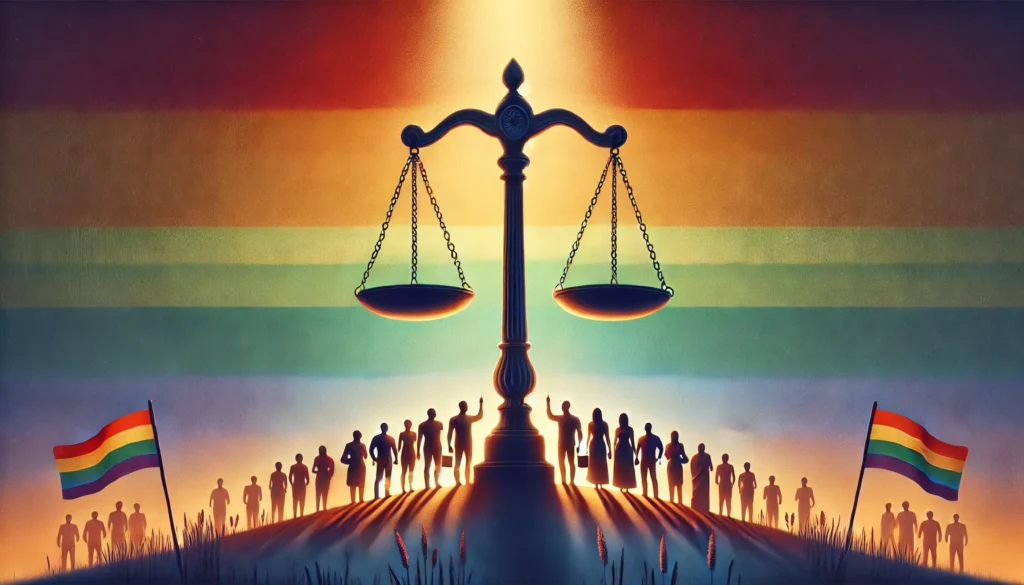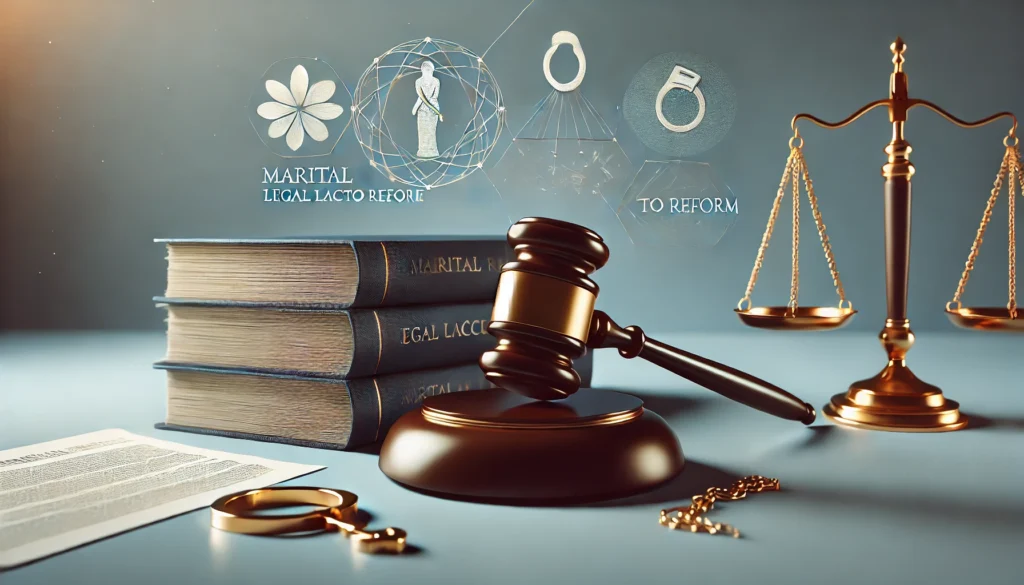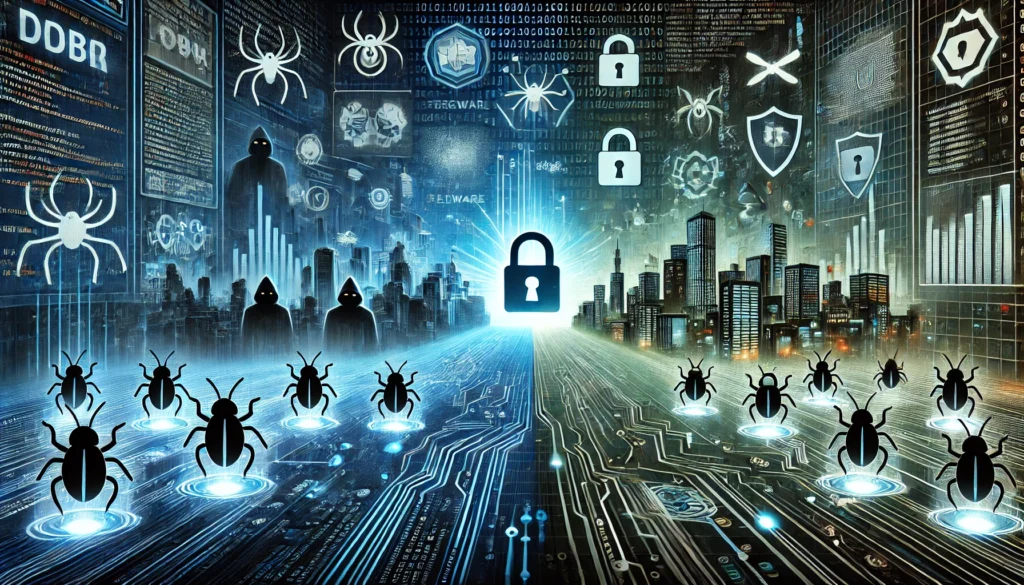Published On: 16th July 2025
Authored By: Kabir Sindhi
GLS UNIVERSITY
Citation: AIR 2018 SC 4321
Court: Supreme Court of India
Bench: Chief Justice Dipak Misra, Justice A.M. Khanwilkar, Justice Rohinton Fali Nariman,
Justice D.Y. Chandrachud and Justice Indu Malhotra
Date of Judgment: 06-09-2018
Petitioner: Navtej Singh Johar
Respondent: Union of India thr. Secretary Ministry of Law and Justice
Introduction
In 2018, the Navtej Singh Johar v. Union of India judgment was a focal point in Indian constitutional law and brought the LGBTQ+ rights movement further along. This particular case went as far as questioning the constitutionality of Section 377 of the Indian Penal Code, 1860—a provision that was put in place by the British colonial government and which outlaws “carnal intercourse against the order of nature.” LGBTQ+ persons have had this law to deal with for decades, and it has unfairly labelled them and smeared their name, basically making love for same-sex partners a crime between adults, a crime!
Some of the key people of the LGBTQ+ community were among those who had brought the petition to the courts. This petition, in short, confirmed that Section 377’s enforcement on matters of private, consensual adult relationships was actually a negation of the supreme rights accorded in the Constitution, like equality (Article 14), non-discrimination (Article 15), freedom of expression (Article 19), and the right to life, dignity, and privacy (Article 21). The petition was aimed at reversing the 2013 Supreme Court decision in Suresh Kumar Koushal which had supported the law. The Supreme Court of India voiced its cohesive, revolutionary stance when they struck down most of the provisions of Section 377. They took a firm stand against the law on same-sex relations between consenting adult persons and endorsed the constitutional morality of inclusion, dignity, and equality of all citizens, which is what happens to people of the opposite sex.
Facts of the case[1]
A notable group of individuals from India’s LGBTQ+ community spearheaded this legal challenge. They included dancer Navtej Singh Johar, journalist Sunil Mehra, restaurant owner Ritu Dalmia, hotel owner Aman Nath, and businesswoman Ayesha Kapur.
These advocates questioned whether Section 377 of the Indian Penal Code (IPC), established in 1860, was constitutional. This particular law, a relic of British colonial rule, made “carnal intercourse against the order of nature” illegal.
Even though the law didn’t directly name homosexuality, it was frequently employed to prosecute and persecute adults engaged in consensual same-sex relationships, effectively making life difficult for LGBTQ+ people.
The petitioners contended that applying Section 377 to consensual adult relationships infringed upon their fundamental rights, which are supposed to be protected by the Indian Constitution.
Their case was a direct response to a prior Supreme Court decision, Suresh Kumar Koushal v. Naz Foundation (2013). That earlier ruling had unfortunately overturned a more progressive decision made by the Delhi High Court (Naz Foundation).
Legal Issue
- Whether Section 377 of the Indian Penal Code is constitutional insofar as it criminalizes consensual sexual acts between adults, forming the central question of the entire case.
- Whether the ‘right to sexuality,’ ‘sexual autonomy,’ and ‘choice of sexual partner’ are protected under Article 21’s right to life and personal liberty, especially following the Puttaswamy judgment on privacy.
- Whether Section 377 violates the right to equality (Article 14) and non-discrimination (Article 15) by targeting individuals based on their sexual orientation.[2]
- Whether constitutional rights are able to limit the majority’s moral views, or does constitutional morality need to be respected even if it goes against what most people believe?
- Whether Section 377 suffers from manifest arbitrariness by creating an artificial distinction between forms of consensual sexual expression, treating only certain acts as “unnatural” or “against the order of nature.”
Argument by Both Parties
By petitioner (Navtej Singh Johar & others)[3]
- The petitioners argued that Section 377 violates the right to equality, freedom of expression, and right to life by criminalizing consensual sexual acts between adults. They asserted that “right to sexuality,” “sexual autonomy,” and “choice of sexual partner” are integral to the constitutional right to life and personal liberty.
- Following the landmark S. Puttaswamy judgment, the petitioners contended that sexual orientation is a core aspect of privacy, which has been recognized as a fundamental right. They emphasized that intimate personal choices are protected under constitutional privacy guarantees.[4]
- The petitioners submitted in their argument that homosexuality, bisexuality, and other sexual orientations are all equal and natural expressions of human choice and identity. They made a point in arguing that sexual-orientation behaviour is the foundation of an individual’s inborn nature that should be given constitutional protection.
- Section 377, as argued by the petitioners, is manifestly arbitrary and over-broad and for the said purpose, immense inspiration has been. drawn from the principles stated in Shayara Bano v. Union of India and others[5], for making consensual relationship a crime on the ground that it is against the order of nature suffers from manifest arbitrariness at the fulcrum.
- It is averred that Section 377 IPC, by creating a taint of criminality, deprives the LGBT persons of their right to reputation which is a facet of the right to life and liberty of a citizen under Article 21 of the Constitution as observed by this Court in Kishore Samrite v. State of U.P. and others[6]and Umesh Kumar v. State of Andhra Pradesh and another[7] to the effect that reputation is an element of personal security and protected by the Constitution with the right to enjoyment of life and liberty. This right, as per the petitioners, is being denied to the LGBT persons because of Section 377 IPC as it makes them apprehensive to speak openly about their sexual orientation and makes them vulnerable to extortion, blackmail and denial of State machinery for either protection or for enjoyment of other rights and amenities and on certain occasions, the other concomitant rights are affected.
- The petitioner in this argued that the Victorian-era thinking behind Section 377 needs to change to a modern, constitutional understanding of morality. After all, this law stems from outdated colonial rules meant to control behaviour considered “abnormal,” which simply doesn’t fit in today’s democratic society.
- The people bringing this case forward asked the court to revisit the Suresh Kumar Koushal v. Naz Foundation ruling that previously supported Section 377. They pointed out that newer court decisions, like the NALSA case recognizing transgender rights and the Puttaswamy case emphasizing privacy, mean that the Koushal decision should be overturned.
- But the core of their argument was this: Section 377 prevents gay and transgender people from fully enjoying the basic rights and freedoms promised by the Constitution. Instead of living with dignity and on equal footing, it forces them to hide “in the shadows,” stopping them from reaching their full potential.
By Respondent (Union of India thr. Secretary Ministry of Law and Justice)
- Section 377 of IPC does not violate Article 14 of the Constitution as it merely defines a particular offence and its punishment and it is well within the power of the State to determine who should be regarded as a class for the purpose of the legislation.
- Section 377 of IPC does not violate Article 15 of the Constitution as the said Article prohibits discrimination based on religion, race, sex, place of birth, caste, and not specifically sexual orientation.[8]
- The applicant argues that granting the petitioners’ requests would essentially constitute judicial lawmaking, as courts lack the authority to insert or remove words from a statute. They point out that Section 377 of the IPC doesn’t contain the terms “consent” or “without consent,” and thus, the courts shouldn’t introduce such a contrived distinction. To support this position, the applicant cites the Supreme Court’s decision in Sakshi v. Union of India and others[9], where it was emphasized that while interpreting a statute, the court should consider both what is explicitly stated and what is omitted. The judgment further cautioned against substituting words within a statute, especially when dealing with laws that define offenses or penalties, as these must be interpreted strictly.
- People who engage in sexual acts deemed unnatural and punishable under Section 377 of the IPC are more likely to contract HIV/AIDS. Because of this increased risk, the right to privacy shouldn’t be used to protect actions that lead to these diseases
- The crime outlined in Section 377 of the IPC suggests a deviation from normal sexual behaviour and includes sexual acts between two people that are seen as offensive, harmful, and going against the natural order. It’s completely within the state’s power to place reasonable limits on such behaviour
- Section 377 of the IPC was created with consideration for the legal systems and principles that were in place in ancient India. This section holds even greater relevance today, legally, medically, morally, and constitutionally.[10]
Holding
The Supreme Court unanimously held that Section 377 was unconstitutional insofar as it criminalized consensual sexual conduct between adults in private. However, provisions related to non-consensual acts, sex with minors, and bestiality remained valid
Reasoning[11]
The five-judge bench of the Supreme Court struck down Section 377 of the Indian Penal Code as unconstitutional where it criminalized consensual sexual acts between adults, overturning its earlier Suresh Koushal judgment.
The Court established that:
- A person’s gender identity is a core part of who they are, and to deny it is to undermine their very dignity as a human being.
- LGBT people deserve to have their privacy respected, and it shouldn’t matter that they belong to a minority group.
- Consensual private acts between adults do not harm public decency or morality
- The government has no right to interfere in the private, consensual relationships of same-sex couples
- The law violated equality rights by targeting people based on sexual orientation
- Being free to choose who you want to build a life with is a basic human right.
Chief Justice Misra emphasized that constitutional morality would protect the rights of the LGBT community even if their rights were opposed by the majority, i.e., the morality of the Constitution would prevail over social morality. Justice Nariman also referred to the fact that the morality regarded in the Victorian era was the driving force behind the enactment of Section 377 and added that the government had the task of disseminating information about the judgment to remove stigma.
Justice Chandrachud observed that even though Section 377 might seem like it treats everyone the same on paper, it really just erased the identities of LGBTQ+ people and made it harder for them to get the healthcare they need. He pushed for active measures to ensure everyone gets the same protection and feels like a true citizen.
Justice Malhotra affirmed homosexuality as “not an aberration but a variation of sexuality” and acknowledged that society as a whole owes the LGBTQ+ community a serious apology for centuries of being pushed aside and rejected.
This verdict recognizes that every citizen, no matter who they love, is guaranteed the right to dignity, privacy, to express themselves, and to be treated equally under the Constitution.
Conclusion
In Navtej Singh Johar v. Union of India (2018), the decision of the court has been acknowledged as a milestone for the rights of the LGBTIQ community in India. By revoking the part of Article 377 that accused consensual same-sex relations of being a crime, the court validated the basic rights of the individuals to be equal, private, and autonomous. This judgment not only legalized homosexuality but it also had a broader effect; it made some acts between straight couples legal, like the same acts that used to be for homosexual couples, such as anal and oral sex; the earlier ones still have the same provisions. But the ruling did not give recognition to same-sex marriage; thus, this issue was left for future discussion and resolution in legal and social factors. The decision was seen as a multi-step, forward movement that harmonized India with the global concepts of human rights and was cheered by the demonstrators not only in the court but also outside. The challenges nevertheless prevail in the journey to reach complete equality for the LGBTIQ community.
Reference(s):
[1] https://blog.ipleaders.in/navtej-singh-johar-v-uoi-judgment-which-decriminalized-homosexuality/accessed 28 March 2025
[2] https://www.alec.co.in/judgement–page/navtej–singh–johar–v–union–of–india–2018 accessed 28 March 2025
[3] https://www.lawctopus.com/academike/case-comment-navtej-singh-johar-and-ors-v-union-of-india/accessed 27 March 2025.
[4] K.S. Puttaswamy & Anr. v. Union of India & Ors. (2017) 10 SCC 1, [144, 145, 479, 647].
[5] .KS. Puttaswamy v. Union of India (2017) 9 SCC 1.
[6] Suresh Kumar Koushal v. Naz Foundation (2013) 2 SCC 398.
[7] Naz Foundation v. Govt. of NCT of Delhi (2013) 10 SCC 591.
[8] https://digiscr.sci.gov.in/admin/judgement_file/judgement_pdf/2018/volume%207/Part%20I/navtej%20singh% 20johar%20&%20ors._union%20of%20india%20thr.%20secretary%20ministry%20of%20law%20and%20justi ce_1698837931.pdf page 86, accessed 29 March 2025.
[9] National Legal Services Authority v. Union of India (2004) 5 SCC 518.
[10] https://lawlex.org/lex–bulletin/case–summary–navtej–singh–johar–v–union–of–india–thr–secretary–ministry–oflaw–and–justice/25100 accessed 27 March 2025
[11] https://globalfreedomofexpression.columbia.edu/cases/navtej-singh-johar-v-union-india/accessed 29 March 2025




